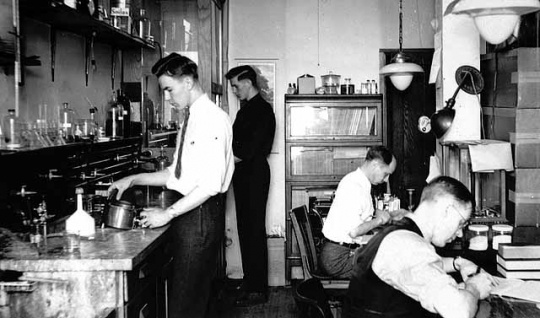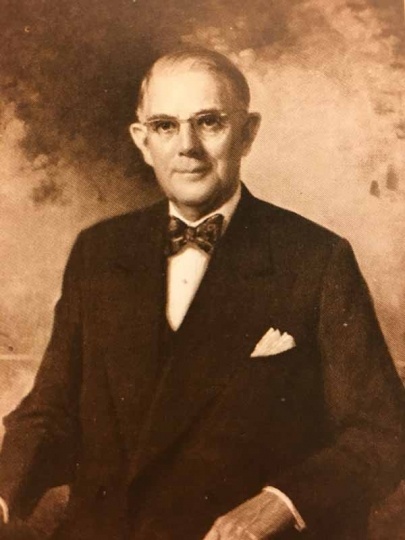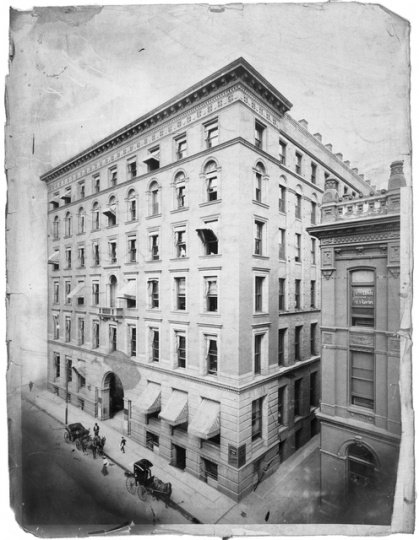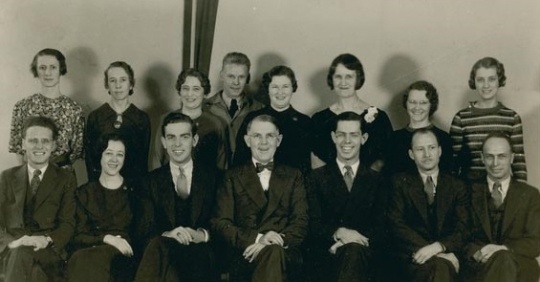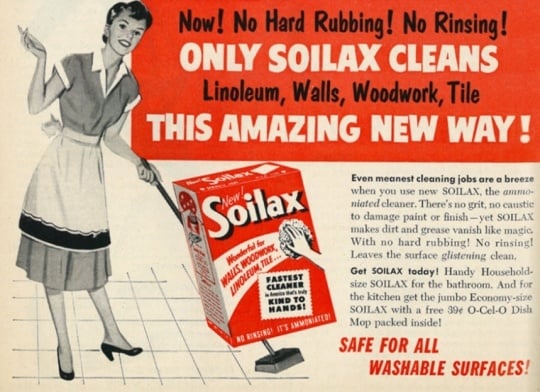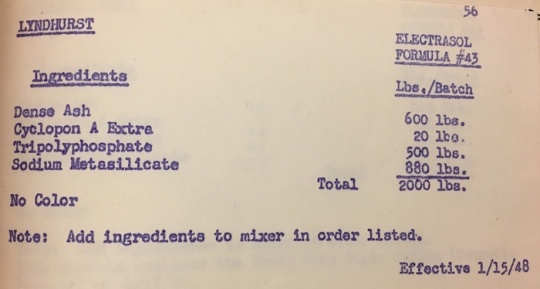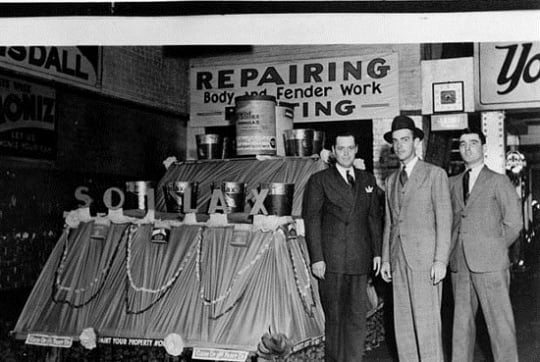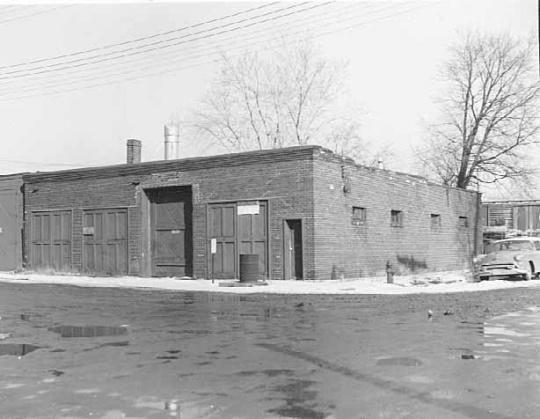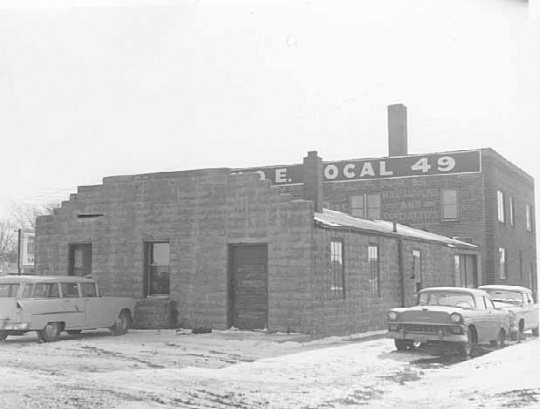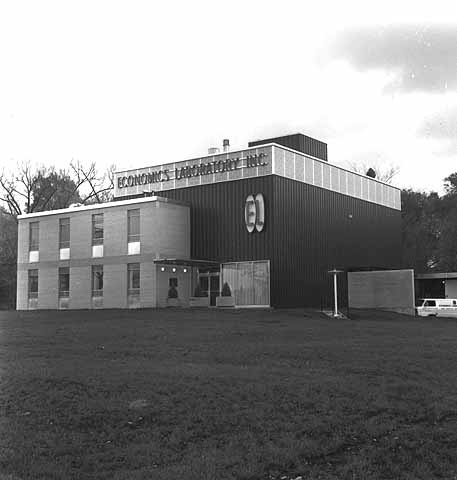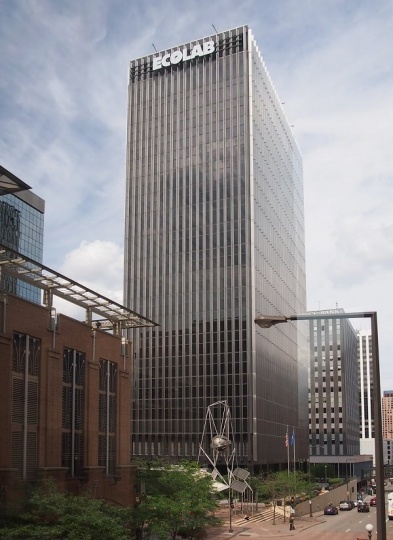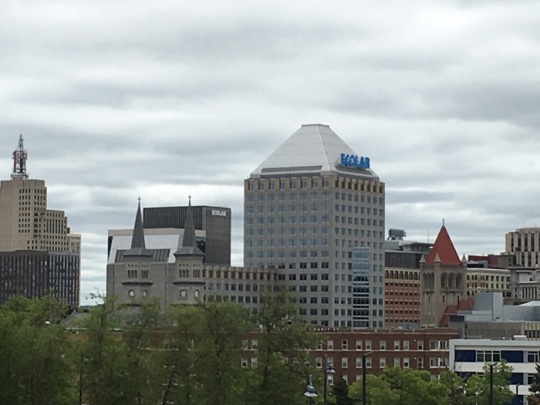Ecolab, Inc.
Employees of the research and development division of the Economics Laboratory (later Ecolab) at work on the sixth floor of the Globe Building in St. Paul, 1938. Pictured are John Effinger, Roy Frommer, Clarence Olson, and John Lewis Wilson.
Bibliography
Bill and Melinda Gates Foundation. What We Do.
https://www.gatesfoundation.org/What-We-Do
Bloomberg. Company Overview of Huntington Laboratories, Inc.
https://www.bloomberg.com/research/stocks/private/snapshot.asp?privcapId=29628
Davis, Riccardo. “Ecolab to Clean up in Fast-food Business.” St. Paul Pioneer Press, November 4, 1994.
“Ecolab, Henkel of Germany Form Joint Venture.” UPI, July 11, 1991.
http://www.upi.com/Archives/1991/07/11/Ecolab-Henkel-of-Germany-form-joint-venture/4776679204800/
Ecolab, Inc.
http://www.ecolab.com/about
Ecolab, Inc. History, Funding Universe.
http://www.fundinguniverse.com/company-histories/ecolab-inc-history/
“Ecolab Speeds Up Acquisition of Joint Venture.” Minneapolis/St. Paul Business Journal, September 28, 2001.
https://www.bizjournals.com/twincities/stories/2001/09/24/daily42.html
Economics Laboratory, Inc. Fiftieth Year: EL Service is Golden. St. Paul: 1974.
Meland, Christa. “Bill Gates Gets OK to Up Stake in Ecolab to 25%.” Twin Cities Business, May 8, 2012.
http://tcbmag.blogs.com/daily_developments/2012/05/bill-gates-gets-ok-to-up-stake-in-ecolab-to-25.html
Melo, Frederick. “St. Paul’s Largest Development Projects of 2016.” St. Paul Pioneer Press, May 12, 2016.
http://www.twincities.com/2016/05/12/st-pauls-largest-development-projects-of-2016/
——— . “Downtown’s Ecolab Tower: Apartments, Offices, Hotel, or All of the Above?” St. Paul Pioneer Press, March 25, 2017.
http://www.twincities.com/2017/03/25/downtowns-ecolab-tower-apartments-offices-hotel-or-all-of-the-above/
Norfleet, Nicole, and Dee Depass. “Ecolab Reaches Agreement to Sell Former Headquarters in St. Paul.” Minneapolis Star Tribune, April 13, 2017.
http://m.startribune.com/ecolab-reaches-agreement-to-sell-former-headquarters-in-st-paul/419324304/
Pederson, J. P. International Directory of Company Histories. Vol. 34. Chicago: St. James Press, 2000.
Reference USA database. Ecolab, Inc.
http://www.referenceusa.com/UsBusiness/Detail/Tagged/3050094373244586a1d2106f085bd7b0?recordId=441424033
“The Stories Behind Minnesota's Foundations.” Minneapolis Star Tribune, November 13, 2015.
http://m.startribune.com/the-stories-behind-minnesota-s-foundations/345771302/
Woltman, Nick. “Ecolab’s Former Downtown St. Paul Headquarters Sold for $3.6 Million.” St. Paul Pioneer Press, July 27, 2017.
http://www.twincities.com/2017/07/27/ecolabs-former-downtown-st-paul-headquarters-sold-for-3-6-million/
Chronology
1923
1953
1957
1962
1967
1968
1978
1986
1986
1991
1996
2001
2011
2012
Bibliography
Bill and Melinda Gates Foundation. What We Do.
https://www.gatesfoundation.org/What-We-Do
Bloomberg. Company Overview of Huntington Laboratories, Inc.
https://www.bloomberg.com/research/stocks/private/snapshot.asp?privcapId=29628
Davis, Riccardo. “Ecolab to Clean up in Fast-food Business.” St. Paul Pioneer Press, November 4, 1994.
“Ecolab, Henkel of Germany Form Joint Venture.” UPI, July 11, 1991.
http://www.upi.com/Archives/1991/07/11/Ecolab-Henkel-of-Germany-form-joint-venture/4776679204800/
Ecolab, Inc.
http://www.ecolab.com/about
Ecolab, Inc. History, Funding Universe.
http://www.fundinguniverse.com/company-histories/ecolab-inc-history/
“Ecolab Speeds Up Acquisition of Joint Venture.” Minneapolis/St. Paul Business Journal, September 28, 2001.
https://www.bizjournals.com/twincities/stories/2001/09/24/daily42.html
Economics Laboratory, Inc. Fiftieth Year: EL Service is Golden. St. Paul: 1974.
Meland, Christa. “Bill Gates Gets OK to Up Stake in Ecolab to 25%.” Twin Cities Business, May 8, 2012.
http://tcbmag.blogs.com/daily_developments/2012/05/bill-gates-gets-ok-to-up-stake-in-ecolab-to-25.html
Melo, Frederick. “St. Paul’s Largest Development Projects of 2016.” St. Paul Pioneer Press, May 12, 2016.
http://www.twincities.com/2016/05/12/st-pauls-largest-development-projects-of-2016/
——— . “Downtown’s Ecolab Tower: Apartments, Offices, Hotel, or All of the Above?” St. Paul Pioneer Press, March 25, 2017.
http://www.twincities.com/2017/03/25/downtowns-ecolab-tower-apartments-offices-hotel-or-all-of-the-above/
Norfleet, Nicole, and Dee Depass. “Ecolab Reaches Agreement to Sell Former Headquarters in St. Paul.” Minneapolis Star Tribune, April 13, 2017.
http://m.startribune.com/ecolab-reaches-agreement-to-sell-former-headquarters-in-st-paul/419324304/
Pederson, J. P. International Directory of Company Histories. Vol. 34. Chicago: St. James Press, 2000.
Reference USA database. Ecolab, Inc.
http://www.referenceusa.com/UsBusiness/Detail/Tagged/3050094373244586a1d2106f085bd7b0?recordId=441424033
“The Stories Behind Minnesota's Foundations.” Minneapolis Star Tribune, November 13, 2015.
http://m.startribune.com/the-stories-behind-minnesota-s-foundations/345771302/
Woltman, Nick. “Ecolab’s Former Downtown St. Paul Headquarters Sold for $3.6 Million.” St. Paul Pioneer Press, July 27, 2017.
http://www.twincities.com/2017/07/27/ecolabs-former-downtown-st-paul-headquarters-sold-for-3-6-million/














